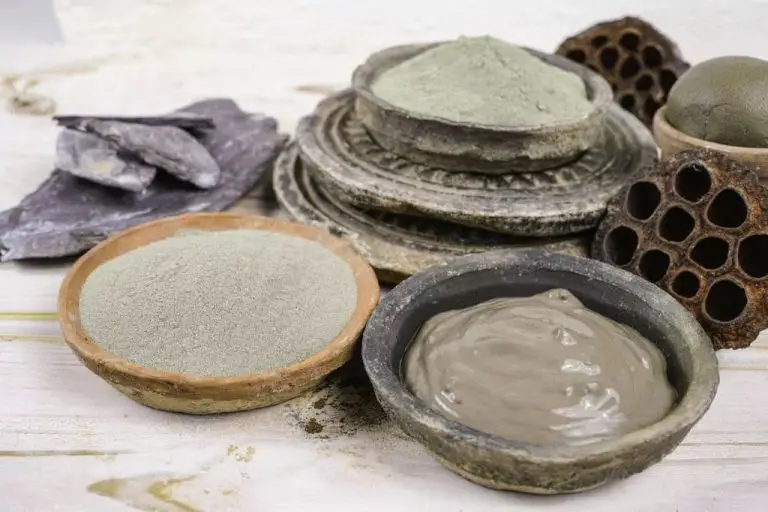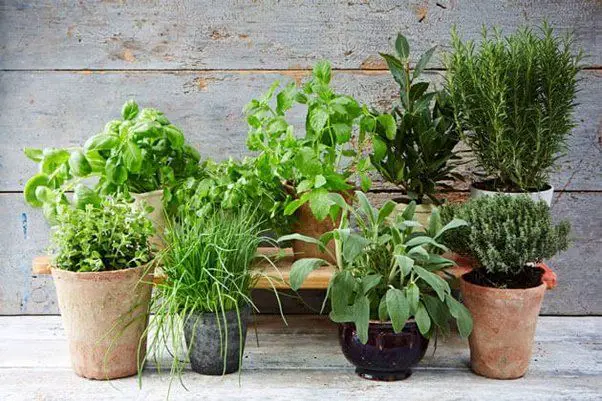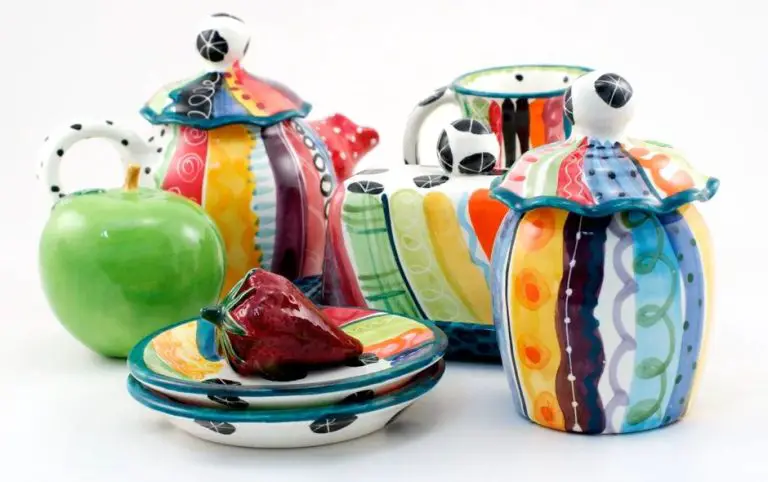Are Handmade Ceramic Mugs Safe To Drink From?
Handmade ceramics and pottery have seen a major resurgence in popularity in recent years. According to BBC, pottery is booming worldwide as people seek out the slow, mindful craft of handmaking ceramics. Similarly, Barcelona Metropolitan reports that passion for handmade pottery is on the rise and shows no signs of declining. Handmade mugs, in particular, have become popular items as people move toward more artisanal, homemade products over mass-produced versions.
There are several factors driving this renewed interest in handmade ceramics. Many people find working with clay therapeutic and enjoy the hands-on, creative process of making pottery. Handmade mugs and other ceramics are also seen as unique, one-of-a-kind items that add artistry and warmth to the home. The tactile nature and imperfections of handmade ceramics lend them a rustic, earthy appeal. As more people move away from disposable, mass-produced goods, handmade ceramics offer durable, sustainable alternatives with timeless aesthetic quality.
Common Materials
Handmade ceramic mugs are typically made from stoneware, porcelain, or earthenware clays. Stoneware is one of the most popular clays for mugs because it is durable, can withstand repeated use, and is made to be thinner than some other clay types. According to Pottery for Beginners: The 4 Main Types of Clay, stoneware fires to high temperatures between 2200°F and 2400°F making it less porous than earthenware. This allows it to hold liquids without seeping and makes it suitable for daily use. Porcelain is another common mug material that is highly vitrified and non-porous. It fires at extremely high temperatures above 2300°F. While durable, porcelain can be more delicate than stoneware. Finally, earthenware fires at lower temperatures between 1600°F and 2200°F according to Types of Clay for Pottery – The 5 Main Types of Ceramic Clay. It is the most porous option and requires glazing to make it non-porous and food safe.
Firing Process
The firing process is a critical step in creating a mug that is safe for drinking. After the mug is shaped and left to dry completely, it undergoes the bisque firing process in a kiln. This involves heating the ceramic to high temperatures, usually around 1000°F – 1100°F (538°C – 593°C). As referenced on thepotterywheel.com, bisque firing prepares the clay for glazing by hardening it and making it less porous. The mug is fired slowly to avoid cracking and damage.
Kilns used for firing ceramics reach very high temperatures up to 2,300°F (1,260°C), heating the mug consistently to fully harden the clay and bond any glazes (shakapottery.com). Modern kilns allow precise computerized control over the firing schedule and temperature curve. Skillful firing helps ensure the mug can withstand repeated use and washing without leaching or breaking down over time.
Glazes and Colorants
Glazes give ceramic pieces their glossy finish and color. The glaze is applied to bisqueware pottery, which has been fired once at a low temperature to harden it. The glazed pottery is then fired at a higher temperature to melt and fuse the glaze to the clay body.
Lead oxide is commonly used in glazes to produce vibrant colors and make the glaze melt at lower temperatures. According to the FDA, lead can leach from ceramicware into food and liquids, posing a health risk (FDA). High lead exposure is toxic and can cause anemia, weakness, kidney damage and brain impairment, especially in children (Digitalfire).
However, lead-free alternatives exist using metal oxides like zinc, barium, and cadmium which produce similar results. Most commercial glazes today are lead-free and labeled as food-safe. Home potters should take precautions and avoid lead unless they can regularly test their glazes (DCCEEW).
Quality Control
Potters of handmade ceramic mugs test for contaminants like lead, cadmium, and heavy metals to ensure safety for food and drink use as part of quality control procedures. Using X-Ray Fluorescence (XRF) testing, lead and cadmium levels can be measured and handmade mugs with unsafe contamination levels can be identified and removed before sale.
According to the FDA, there is a voluntary standard of no more than 0.5% lead in ceramicware (“Guidance for Industry: Lead in Ceramic Foodware” https://www.fda.gov). Many responsible potters take steps to meet or exceed this threshold through rigorous testing and quality control. While occasional presence of trace contaminants is possible, reputable artisans will have safety protocols in place to minimize risks.
FDA Standards
The FDA has established regulations for lead and cadmium levels in ceramicware intended for use with food. These standards are laid out in the FDA Compliance Policy Guide Section 545.450 and the FDA’s Guidance for Industry on the Safety of Imported Traditional Pottery.
According to the FDA’s guidance, ceramicware should not leach more than 0.5 parts per million of lead into food when filled to the brim with a 4% acid solution for 24 hours at room temperature. Ceramicware also cannot contain more than 0.25 micrograms of cadmium per milliliter when tested in a 4% acid solution for 24 hours at room temperature.
Any ceramicware that does not meet these standards is considered unsafe for food contact and cannot be imported or sold in the United States. The FDA regularly tests ceramicware at ports and retail locations to ensure compliance with lead and cadmium limits.
The FDA also provides voluntary guidance for a “Lead-Free” label on ceramicware meeting more stringent lead limits of 0.01 ppm when tested with a 4% acetic acid solution for 24 hours at room temperature. However, this “Lead-Free” label is not mandatory.
Sources:
https://www.fda.gov/files/inspections%2C%20compliance%2C%20enforcement%2C%20and%20criminal%20investigations/published/CPG-Sec.-545.450-Pottery-%28Ceramics%29–Import-and-Domestic—Lead-Contamination.pdf
https://www.fda.gov/regulatory-information/search-fda-guidance-documents/guidance-industry-safety-imported-traditional-pottery-intended-use-food-and-use-term-lead-free

Proper Use
It’s important to take proper care of handmade ceramic mugs to ensure their longevity and safety. Most ceramic artists recommend always handwashing ceramic mugs and avoiding the dishwasher. The high heat and harsh detergents used in dishwashers can cause the glaze on ceramic mugs to fade or chip over time. According to ceramic mug experts Joyce & Joan, “To keep your ceramic item in the best condition, it’s always a good idea to rinse shortly after use to help prevent staining, particularly from tea and coffee.” 1
Handwashing ceramic mugs immediately after use with mild dish soap and warm water is ideal. Letting stains from coffee or tea set in can make them harder to remove later. It’s also important to never microwave handmade ceramic mugs, as the rapid temperature changes can cause small cracks in the mug over time. Always use ceramic mugs for cold or room temperature beverages to prevent thermal shock. With proper handwashing and avoiding microwave use, handmade ceramic mugs can provide years of beauty and enjoyment.
Assessing Safety
When assessing if a ceramic mug is safe to use, it’s important to thoroughly inspect it for any chips, cracks, or other damage. Even small cracks in the glaze can allow chemicals to leach into liquids stored in the mug over time. According to experts at Simply Recipes, “Cracks in the glaze expose the porous clay underneath, which can harbor bacteria and allow lead to leach through over time” (source).
Check the rim, inside, bottom, and handle for any hairline cracks or flaws. Also inspect the glaze to ensure it is smooth and consistent with no pinholes or bubbles exposed. It’s best to run your finger along surfaces to feel for any unevenness. Avoid using mugs with major cracks or damage as they are more prone to breaking or allowing chemicals to leach. Safest bet is to use mugs that are smooth, high-quality, without any chips or cracks.
If concerned about lead, experts recommend avoiding handmade pottery from unauthorized studios or artists. Lead glazes were commonly used until the late 1970s, so vintage items could be a concern. Newer commercial ceramics follow stricter standards. You can also find lead-free items by reputable brands (source). Periodically inspecting items and discarding anything damaged ensures ongoing safety.
Alternatives
While ceramic mugs are popular, some people may prefer alternative materials for their drinkware. Two common alternatives to ceramic are glass and stainless steel.
Glass mugs, like ceramic, allow you to see the contents inside. They can be an elegant and stylish option for serving coffee or tea. However, glass lacks the insulating properties of ceramic and can feel hot or cold to the touch. Glass mugs are also more prone to breaking if dropped.
Stainless steel travel mugs are ideal for taking drinks on the go. They keep contents hot or cold far longer than ceramic or glass. Stainless steel mugs are durable and won’t shatter if dropped. However, some people don’t like the metallic taste stainless steel can impart. Stainless steel also prevents you from seeing how much liquid is left.
For stylish glass mug options, check out this roundup from Food and Wine: https://www.foodandwine.com/lifestyle/kitchen/best-coffee-mugs. For durable stainless steel travel mugs, this Reddit thread has recommendations: https://www.reddit.com/r/Coffee/comments/180glkl/ember_mug_alternatives/.
Conclusion
Handmade ceramic mugs can be a safe and healthy option for daily use, but there are a few key factors to consider when assessing their safety. The materials used, firing process, glazes, quality control measures, and proper use guidelines all play a role in determining if a mug is safe. While ceramic mugs from reputable artists and companies that follow FDA standards are generally safe, there is always a small risk of contamination from improper firing, glazes containing lead or cadmium, or chipping over time. Being informed about proper use and care is important. Overall, handmade ceramic mugs represent a longstanding craft that usually poses minimal risks when adequate safety precautions are followed. With some basic research and care, handmade ceramics can be safely enjoyed for years to come.



